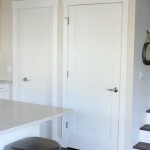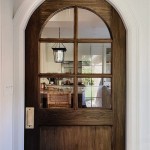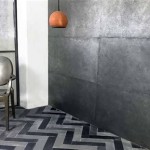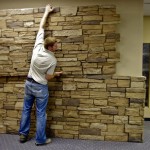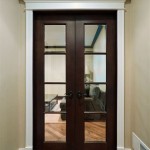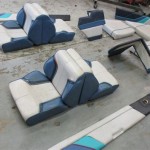How To Paint Interior Cinder Block Basement Walls
Painting interior cinder block basement walls presents a unique set of challenges distinct from painting drywall or plaster. Cinder block, also known as concrete masonry units (CMUs), is porous and absorbent, requiring specialized preparation and application techniques to achieve a durable and aesthetically pleasing finish. This article details the process of painting interior cinder block basement walls, covering essential steps from surface preparation to sealant application.
The porous nature of cinder block means that it absorbs more paint than typical wall surfaces. This can lead to uneven color, peeling, and moisture issues if not addressed properly. The alkalinity of concrete can also interfere with paint adhesion. Furthermore, basement environments are often damp, which can exacerbate these problems. Consequently, a thorough understanding of the necessary procedures is crucial before beginning this type of painting project.
Surface Preparation: Cleaning and Repairing Cinder Block
Proper surface preparation is the foundation of a successful painting project on cinder block. The goal is to create a clean, sound surface that will readily accept primer and paint. This involves cleaning the walls to remove dirt, efflorescence, and any loose material, as well as repairing any cracks or imperfections.
Cleaning: The first step is to thoroughly clean the cinder block walls. Begin by using a stiff-bristled brush to remove loose dirt, dust, and debris. Next, wash the walls with a solution of water and a mild detergent. For areas with stubborn dirt or mold, a solution of water and trisodium phosphate (TSP) can be used; however, it is crucial to wear appropriate personal protective equipment (PPE), including gloves and eye protection, when working with TSP. Scrub the walls vigorously, paying particular attention to cracks and crevices. Rinse the walls thoroughly with clean water and allow them to dry completely. Drying time can take several days, depending on the humidity and ventilation in the basement.
Efflorescence, a white, powdery deposit of salt, is a common issue on cinder block walls, indicating moisture movement through the masonry. Efflorescence must be removed before painting, or it will compromise the paint adhesion. Brush off as much of the efflorescence as possible with a stiff brush. Then, apply a solution of muriatic acid diluted with water, following the manufacturer's instructions carefully. Muriatic acid is corrosive, so it is essential to wear appropriate PPE, including gloves, eye protection, and a respirator. Neutralize the acid with a solution of baking soda and water, rinse thoroughly with clean water, and allow the walls to dry completely before proceeding.
Repairing: Examine the cinder block walls for cracks, holes, and other imperfections. Small cracks can be filled with a masonry crack filler. Follow the manufacturer's instructions, applying the filler with a putty knife and smoothing it flush with the surrounding surface. For larger cracks and holes, a patching compound formulated for concrete repair may be necessary. Deeper voids may require multiple applications of patching compound, allowing each layer to dry completely before applying the next. Once the patching compound has dried, sand it smooth to blend seamlessly with the surrounding cinder block. Ensure all repairs are completely dry before moving on to the next step.
Priming Cinder Block Walls
Priming cinder block walls is an indispensable step in preparing them for paint. Primer serves several critical functions: it seals the porous surface of the cinder block, improves paint adhesion, and helps to create a uniform surface for the paint to adhere to. The correct type of primer is crucial for long-lasting results.
Choosing the Right Primer: For cinder block basement walls, an alkali resistant primer is recommended. This type of primer is formulated to withstand the alkaline nature of concrete and prevent it from interfering with the paint's adhesion. Elastomeric primers are also an effective choice, as they are designed to flex and move with the concrete, preventing cracks. Another option is a block filler primer, which is a thicker primer designed to fill in the pores and uneven texture of the cinder block. Choose a primer specifically designed for masonry or concrete surfaces. It is advisable to consult with a paint specialist at a local hardware store to determine the best primer for specific needs and environmental conditions.
Applying the Primer: Apply the primer using a brush, roller, or paint sprayer. If using a brush, use a wide brush to cover large areas quickly. For the best results, a roller with a thick nap is recommended, as it will help to get the primer into the pores and crevices of the cinder block. A paint sprayer can also be used for a more even application, but masking off surrounding areas is crucial to prevent overspray. Apply one to two coats of primer, following the manufacturer's instructions for drying time between coats. Ensure that the primer completely covers the cinder block surface, paying particular attention to the mortar joints and any repaired areas. Once the primer has dried completely, inspect the walls for any missed spots or imperfections. Touch up any areas as needed before proceeding to the painting stage.
Painting Cinder Block Walls
With the surface properly prepared and primed, the final step is to paint the cinder block walls. Selecting the right paint and applying it correctly will ensure a durable and attractive finish.
Choosing the Right Paint: For interior cinder block basement walls, a high-quality acrylic latex paint is recommended. Acrylic latex paint is durable, water-resistant, and breathable, allowing moisture to escape from the cinder block while preventing water from penetrating the surface. It is also resistant to mildew, which is a common problem in basements. Choose a paint with a satin or semi-gloss finish, as these finishes are more resistant to moisture and easier to clean than flat finishes. Consider using a paint specifically formulated for masonry surfaces, as these paints are designed to withstand the alkaline environment of concrete.
Applying the Paint: Apply the paint using a brush, roller, or paint sprayer, similar to the primer application. If using a brush, use a wide brush to cover large areas quickly. For best results, a roller with a thick nap is recommended to get the paint into the pores and crevices of the cinder block. A paint sprayer can provide a more even finish, but masking off surrounding areas is crucial to prevent overspray. Apply two coats of paint, following the manufacturer's instructions for drying time between coats. Ensure that the paint completely covers the primed surface, paying particular attention to the mortar joints and any repaired areas. Allow the paint to dry completely before moving on to the next step.
Sealing & Moisture Control: After painting, consider applying a clear sealant to further protect the cinder block walls from moisture. A masonry waterproofer can be applied to the painted surface to provide an extra layer of protection against water infiltration. Ensure that the sealant is compatible with the paint used. Proper ventilation in the basement is also essential to prevent moisture buildup. Consider using a dehumidifier to control humidity levels, especially during periods of high humidity. Regularly inspect the walls for signs of moisture or efflorescence and address any issues promptly to prevent damage.

Painting Cinder Block Walls In A Basement Or Re Paint Them

Painting Cinder Block Walls In A Basement Or Re Paint Them

Painting Cinder Block Walls In A Basement Or Re Paint Them

Painting Cinder Block Walls In A Basement Or Re Paint Them

Painting Cinder Block Walls In A Basement Or Re Paint Them

Painting Cinder Block Walls In A Basement Or Re Paint Them
.jpg?strip=all)
Before After Painted Cinderblock Walls Dream Green Diy

Painting Cinder Block Walls In A Basement Or Re Paint Them

How To Beautifully Transform Your Cinder Block Wall

Painted Cinderblock Wall 80 90s Tile Floor Cinder Block Walls Concrete Basement Makeover
Related Posts


